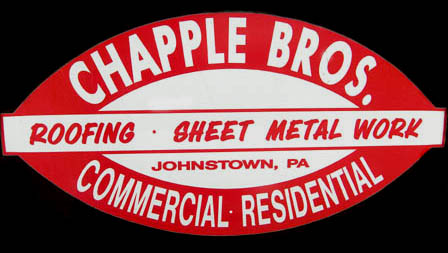
Roofing Terminology
(Click on a letter to learn more)
A
B
C
D
E
F
G
H
I
J
K
L
M
N
O
P
Q
R
S
T
U
V
W
X
Y
Z
Saturated Felt
A felt that has been partially saturated with low softening point bitumen.
Screen
An apparatus with apertures for separating sizes of material.
Seal
A narrow closure strip made of bituminous materials; to secure a roof from the entry of moisture.
Sealant
A mixture of polymers, fillers, and pigments used to fill and seal joints where moderate movement is expected; it cures to a resilient solid.
Self-Adhering Membrane
A membrane that can adhere to a substrate and to itself without use of adhesives. The undersurface is protected by a release paper.
Selvage
An edge or edging that differs from the main part of a fabric or granule-surfaced roll roofing material.
Selvage Joint
A lapped joint designed form mineral surfaced cap sheets. The mineral surfacing is omitted over a small portion of the longitudinal edge of the sheet below in order to obtain better adhesion of the lapped cap sheet surface with the bituminous adhesive.
Shark Fin
An upward curled felt side or lap or end lap.
Shingle
A small unit of prepared roofing material designed to be installed with similar units in overlapping rows on inclines normally exceeding 25 percent; to apply any sheet material in overlapping rows.
Sieve
An apparatus with apertures for separating sizes of material.
Slag
A hard, air-cooled aggregate that is left as residue from blast furnaces. It is used as a surfacing aggregate and should be surface dry and free of sand, clay, or other foreign substances at the time of application.
Slip Sheet
A sheet material placed between two components of a roof assembly to ensure that no adhesion occurs between them, and/or to prevent possible damage from chemical incompatibility, wearing or abrasion of the membrane. Often associated with PVC membranes.
Slippage
The relative lateral movement of adjacent components of a built up roof membrane. It occurs mainly in roof membranes on a slope, sometimes exposing the lower plies to the weather.
Slope
The tangent of the angle between the roof surface and the horizontal. It is measured in inches per foot.
Smooth-Surfaced Roof
A built up roof membrane surfaced with a layer of hot mopped asphalt, cold applied asphalt clay emulsion, cold applied asphalt cutback, or sometimes with an unmopped inorganic felt.
Snow Load
A load imposed on buildings due to snowfall. (Categorized as live or environmental load).
Softening Point Drift
A change in the softening point of bitumen during storage or application.
Soil Stack
A sanitation pipe that penetrates the roof used to vent plumbing fixtures.
Solvent Welding
A process where a liquid solvent is used to chemically weld or join together two or more layers of certain membranes (usually thermoplastics).
Sprayed Polyurethane Foam (SPF)
A foamed plastic material, formed by spraying two components, PMDI ([A] component) and a resin ([B] component) to form a rigid, fully adhered, water resistant, and insulating membrane.
Square
The term used to describe 100 square feet of roof area.
Stack Vent
A vertical outlet in a built up roof system designed to relieve any pressure exerted by moisture vapor between the roof membrane and the vapor retarder or deck.
Standing Seam
A metal roof system that consists of an overlapping or interlocking seam that occurs at an upturned rib.
Steep Asphalt
A roofing asphalt that has a softening point of approximately 190F (88C) and that conforms to the requirements of ASTM Standard D 312, Type III.
Strawberry
A small bubble or blister in the flood coating of gravel surfaced roof membrane. A small bubble or blister in the flood coating of gravel surfaced roof membrane.
Stress Crack
External or internal cracks within a material caused by long-term stress.
Stripping
The technique of sealing a joint between metal and strip flashing the built-up roof membrane with one or two plies of felt and hot applied or cold applied bitumen; the technique of taping joints between insulation boards on deck panels.
Styrene Butadiene, Styrene Copolymer (SBS)
High molecular weight polymers that have both thermoset and thermoplastic properties formed by the block copolymeriztion of styrene and butadiene monomers. These polymers are used as the modifying compound in SBS polymer modified roofing membranes to impart rubber like qualities to the asphalt.
Substrate
The surface upon which the roofing or waterproofing membrane is applies (i.e. the structural deck or insulation).
Superimposed Loads
Loads that are added to existing loads. For example, a large stack of insulation boards placed on top of a structural steel deck.

Back to Chapple Brothers Main Page


